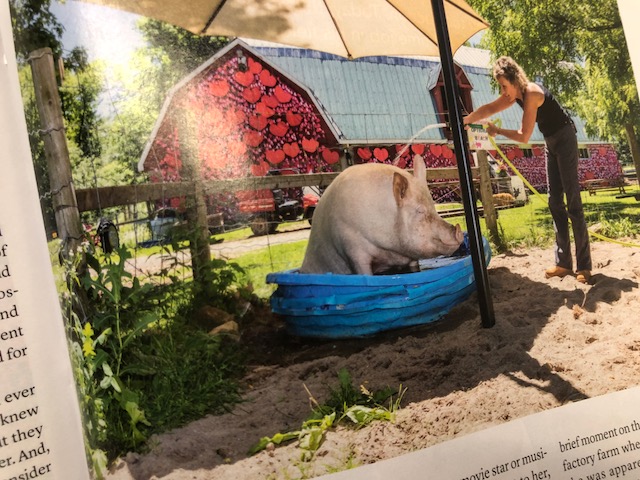
I am fortunate to work with many animal lovers on their philanthropic estate plans. They are interested in a wide range of animals and issues. A recent article in The Walrus magazine about the animal sanctuary, registered charity and social media phenomenon Happily Ever Esther Farm Sanctuary highlights a number of key estate planning and charity issues.
Esther the Wonder Pig
First a word about Esther the pig. Esther is a 650-pound social media star who lives on an sanctuary farm named after her in Campbellford, Ontario. She was rescued as a piglet in 2012 and after a few charming Instagram posts became a social media phenom with a weekly following of 4 to 7 million people. Find her on Instagram, Facebook, and merchandise.
Animal Sanctuary Charities
Esther’s home is a fascinating and successful example of a growing breed of registered charity, the animal sanctuary. Like many sanctuaries Happily Ever Esther started by accident, with passionate founders and animals in need. As The Walrus observes, the cost and effort of caring for rescued animals is significant and inherently challenging. Despite genuine good intentions, a few Canadian sanctuaries have been shut down by SPCA for animal cruelty as charismatic founders age, expenses mount and the day-to-day care needs becomes overwhelming. And most lack succession plans. Sanctuaries are often competitive and the “community” is reportedly divided. It can be heartbreaking.
Social Enterprise Structure
Happily Ever Esther has been run well and, based on evidence in its CRA charity filings, is informed by a prudent and sophisticated structure. The founders “basically run two businesses”: the charity and Esther the Wonder Pig, presumably a for-profit corporation. The founders crowd-funded half a million dollars in two months to personally buy the farm in 2015. The same year the growing sanctuary became a registered charity that had mostly donation revenue of $480,000 in 2017. The charity, which has one of the two founders on the board, doesn’t own the farm and pays rent annually. One founder works for the Esther business and the other for the charity/sanctuary. While it isn’t called a social enterprise in the article, this co-located structure is a successful example.
Charity Law
The article also inadvertently makes a comment with charity law implications. “While traditional zoos and aquariums still like to think of themselves as agents of conservation and education, creating otherwise impossible connections between human and creature, sanctuaries suggest a different lesson: animals should be preserved for their own sake, not ours.” CRA’s guidance on animal welfare points out that the courts say we protect animals for our sake, not theirs. Another example of the common law of charity law failing to reflect current perceptions of public good.
Estate Planning Implications
Returning to the issue of estate planning, the conundrum for many donors is how to support the activity in the future if a favourite organization is not be in existence. The classic legal solution is a “purpose” charitable trust. This structure identifies the charitable objects to be supported but leaves it up to the trustee to decide which organization can best advance them. The modern version of this structure is a legacy donor advised fund with a charitable purpose within a public foundation. After the death of the donor, grants are made to best examples of animal sanctuaries currently operating.

0 Comments